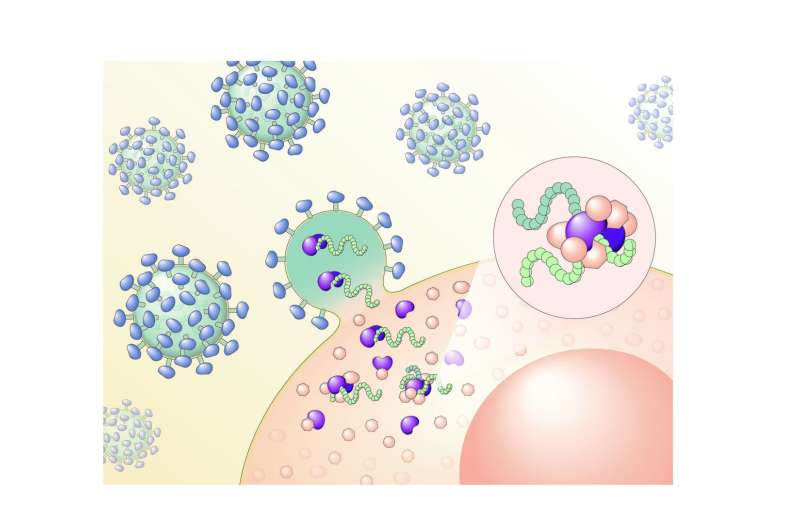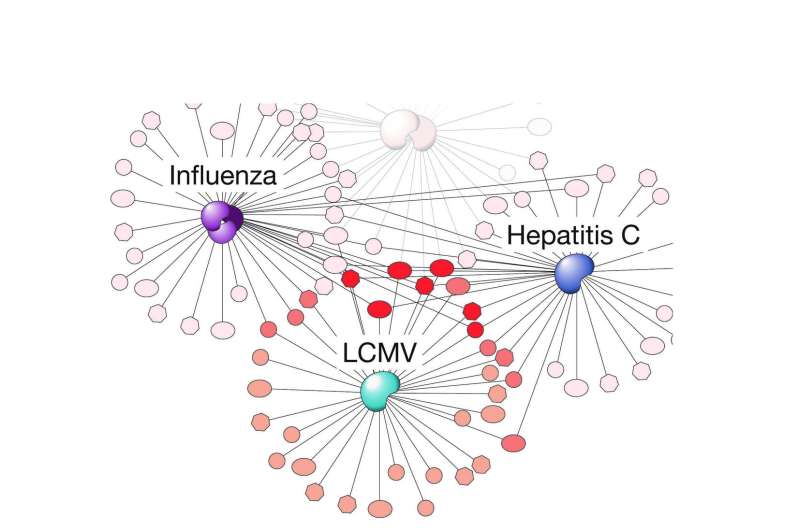Scientists established a comprehensive protein interactions map of the replication machinery of a chronic virus

Chronic viral infections like HIV or hepatitis are among the biggest threats to human health worldwide. While an acute viral infection usually results in full recovery and effective immune memory, chronic viruses evade the immune system and remain permanently in the host's body. Treating such viruses is a difficult task, as the molecular events during the development of a chronic infection remain largely elusive.
With their latest study published in PLOS Pathogens, the team of Andreas Bergthaler at the Austrian Academy of Sciences, in cooperation with the University of Basel and the MRC Laboratory of Molecular Biology, Cambridge, made an important contribution to the understanding of chronic viral infections. The scientists established the first comprehensive overview of cellular proteins interacting with the LCMV polymerase, a crucial enzyme for the replication of the virus and for chronic infection. By mapping them in the human proteome, they revealed viral strategies and potential targets for future antiviral therapeutics.
In order to perform the study, the researchers, including Ph.D. student Kseniya Khamina as first author, developed a novel approach to tag viral proteins. The interactions of the LCMV polymerase with the proteins of the host cells were determined. Combined with publicly available data from other RNA viruses' polymerase interactomes, the generated dataset allowed the researchers to map the cellular pathways targeted by different viral polymerases. Some of the proteins found to interact with the LCMV polymerase turned out to be essential for the viral life cycle.

"With our newly developed method we were able to show that some proteins, like DDX3X, have a proviral effect—they are important binding partners for the virus to survive. Others, like the TRIM21 protein, show more of an antiviral effect, they serve the host cell as an intracellular defense against the pathogen," explains Kseniya Khamina. "Mice lacking the TRIM21 protein entirely showed an impaired virus control when infected with a chronic strain of LCMV."
"The results of our study provide the first comprehensive overview of the molecular binding partners of the LCMV polymerase. Furthermore, their mapping in the human proteome reveals important infection strategies of chronic viruses," Andreas Bergthaler summarizes the findings. "We hope that our research leads to a better understanding of the emergence of chronic viral infections and the complex molecular interactions of viruses and their hosts, and that we can thereby contribute to the development of novel antiviral therapies."
More information: "Characterization of host proteins interacting with the lymphocytic choriomeningitis virus L protein" PLOS Pathogens, December 20, 2017. DOI: 10.1371/journal.ppat.1006758

















